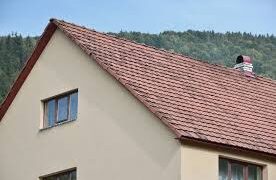Cabinets set the tone for your entire kitchen and are typically one of the biggest budget items. It’s important to take the time to consider layout, style, materials, and storage when choosing cabinetry.
Storage
Kitchen RTA cabinets Austin house all the dishes, cookware, and small appliances you use for preparing food and entertaining. Storing these essentials in a tidy, easily accessible way can streamline prep and clean-up.
While many homeowners focus on cabinet style when choosing a new kitchen, pairing form with function is equally important.
Some cabinet manufacturers offer customizable storage solutions that make the most of every inch. For example, drawer dividers can keep cutlery and utensils in place instead of sliding around the bottom of drawers. Other organizers can include roll holders for foil and cling film, sloping shelves to store spice jars so their labels are easy to read, knife blocks, espresso racks, and more.
Materials
Cabinets are the backbone of a kitchen, and it is important to select durable materials that will stand up well over time. Many experts in kitchen cabinets Austin recommend avoiding particleboard and fiberboard, as these are not moisture-resistant and can degrade quickly. A more robust option is medium-density fiberboard or MDF. MDF is denser than plywood and can be sanded for a smooth, grain-free finish. It also has the added benefit of being resistant to mold and mildew. Another non-wood material is thermofoil, which consists of a vinyl film applied to a substrate. It is a popular choice among homeowners because it closely resembles the look of solid wood and has good heat resistance. Thermofoil is easy to wipe down and doesn’t show fingerprints as easily. Lastly, it is affordable and has good strength and flexibility. Hardwood is the most expensive material but offers value for its durability and long lifespan. It is scratch-resistant and has excellent screw-holding ability, making it ideal for face frames and drawers.
Layout
Cabinets are the largest design element in a kitchen and greatly impact both style and functionality. They are one of the most long-lasting and expensive features, so ensuring they fit well into your space and work with your lifestyle and home’s overall design is crucial. Start by taking measurements and mapping out a kitchen layout. This will help narrow your options and provide a clear guideline for the kitchen designers or cabinet dealers/makers you work with. A popular trend is tall cabinets, which turn wall space into much-needed storage. Consider keeping most of your tall cabinets open for a more open feel but adding a few closed doors for essentials like spices and canned goods.
Style
Cabinets hold most kitchen items, from pots and pans to dishware and utensils. Their design, layout, and size can significantly impact your room’s look and feel. So when you’re getting ready to renovate, it’s essential to consider these must-know cabinet tips. Flat-front cabinets, called slab, feature single-board doors without frames or panels and work well with various decor styles. “They’re a staple for contemporary high-gloss designs, Nordic minimalist spaces, mid-century modern homes, and luxury mountain cabins,” says Lovelace. They’re also easy to repaint and are free of cracks and crevices that can collect dust. Beadboard cabinets, with tall slats that fit together like a puzzle, can be more budget-friendly than other options. But they’re only for some, as the slats can collect dust and are challenging to clean.




